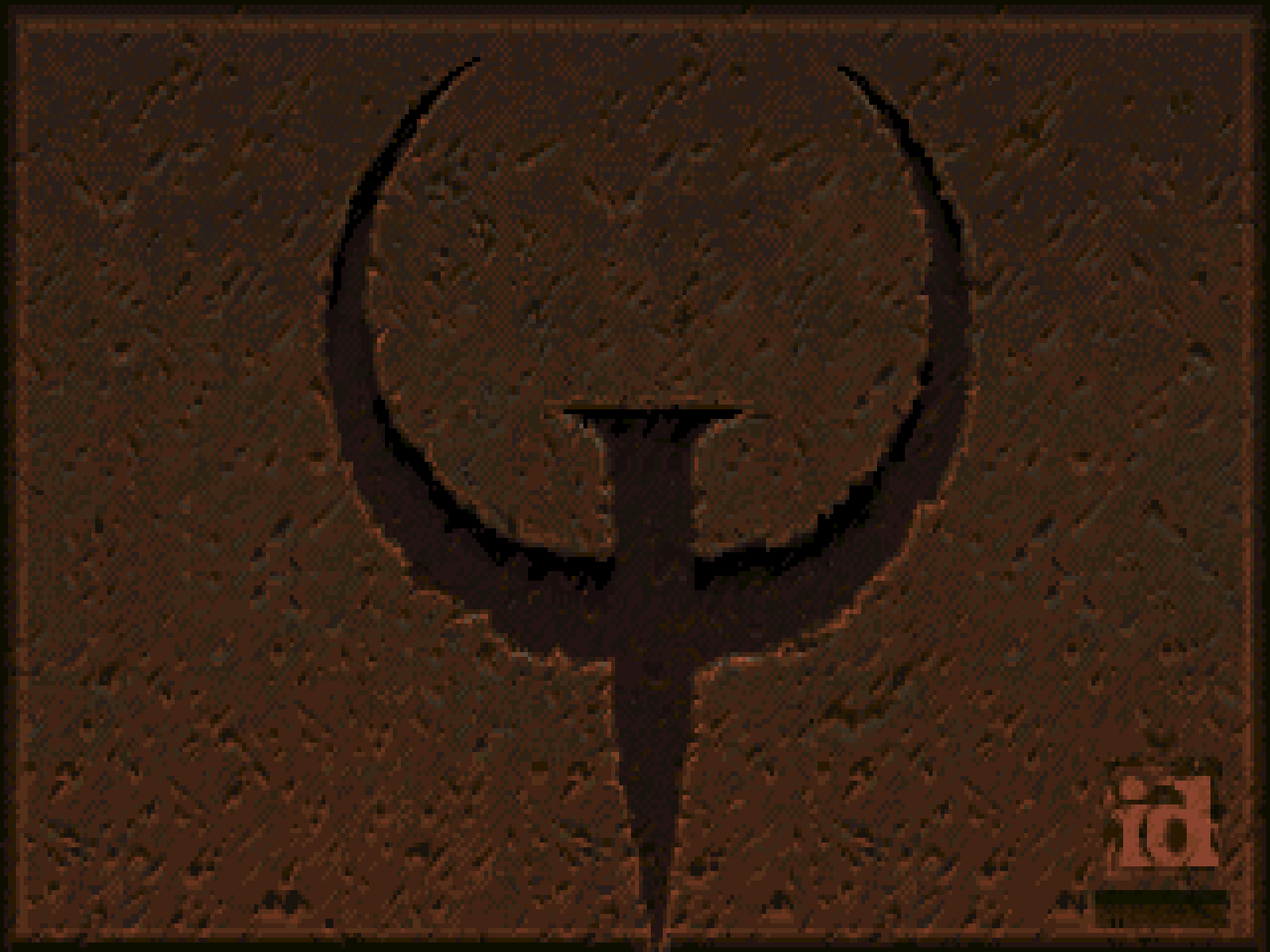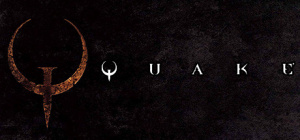Quake
Nightdive Studios (Enhanced)
| Hipnotic Interactive (Mission Pack 1) Rogue Entertainment (Mission Pack 2) |
MS-DOS:
June 22, 1996 (shareware)
July 22, 1996 (full version)
Windows:
January 22, 1997 (GLQuake)
March 11, 1997 (WinQuake)
May 31, 2007 (Steam)
Linux:
July 5, 1996
Mac OS (Classic):
August 28, 1997
Saturn:
November 27, 1997
Nintendo 64:
March 24, 1998
Windows, Nintendo Switch, PlayStation 4, Xbox One (Enhanced):
August 19, 2021
PlayStation 5, Xbox Series X/S (Enhanced):
October 12, 2021
Enhanced version only:
PlayStation 4, PlayStation 5, Xbox One, Xbox Series X/S, Nintendo Switch
Documentation on this wiki focuses on that which relates to Valve's engines. For links to external resources focused on Quake modding, see Quake/For developers.
![]() Quake is a 3D first-person shooter released in 1996 by id Software. Its engine was licensed out to many companies, including Valve. GoldSrc is based off of Quake engine code, specifically, GLQuake and Quakeworld (with some Quake II code), with it's successors Source and Source 2 both still retaining some residual Quake code.
Quake is a 3D first-person shooter released in 1996 by id Software. Its engine was licensed out to many companies, including Valve. GoldSrc is based off of Quake engine code, specifically, GLQuake and Quakeworld (with some Quake II code), with it's successors Source and Source 2 both still retaining some residual Quake code.
The Quake Engine and its successor, the Quake II Engine, are now both retroactively referred to as id Tech 2. Both engines have been released as free and open source under the GPLv2 license, allowing for many source ports to be created, which add quality-of-life improvements and are now the preferred way of playing the game, including a remaster released in 2021.
Relevance to Valve engines
The ![]() Quake Engine introduced many of the concepts still used in Source today, such as the modern variant of the BSP, the use of a PVS, precomputated lightmaps, visleafs and brush entities. However, since Source 2 engine, BSP (including brush entities) has been replaced with Meshes (and mesh entity) for geometry. Early GoldSrc multiplayer was based off the QuakeWorld multiplayer code (until 2001, when some Quake III[citation needed] code was added).
Quake Engine introduced many of the concepts still used in Source today, such as the modern variant of the BSP, the use of a PVS, precomputated lightmaps, visleafs and brush entities. However, since Source 2 engine, BSP (including brush entities) has been replaced with Meshes (and mesh entity) for geometry. Early GoldSrc multiplayer was based off the QuakeWorld multiplayer code (until 2001, when some Quake III[citation needed] code was added).
In GoldSrc before later WON/Retail versions, Half-Life used to have view rolling effect, which was later removed (or broken), this was later restored in Half-Life 25th Anniversary Update. Source also have view rolling effect which can be enabled using sv_rollangle (marked as launcher-only/hidden in most games) console command.
GoldSrc also can uses Quake MDLs (but won't render textures properly), before this was patched in August 2019 due to security reasons. Using Quake MDLs on GoldSrc after August 2019 engine update will now crashes the game. Both of these issues were circumnavigable in single-player mods using custom renderers.
Compilers
Quake also uses three compiler tools in compiling a map: QBSP, VIS, and LIGHT. The code for these was used as the basis of the compiling tools used by the compilers used by the Valve engine map compilers, as seen below:
| Original |
Original |
Original |
||||
|---|---|---|---|---|---|---|
| CSG | part of QBSP | part of QBSP3 | QCSG | HLCSG | part of VBSP | resourcecompiler* |
| BSP | QBSP (Source code) | QBSP3 | QBSP2 | HLBSP | VBSP | |
| VIS | VIS (Source code) | QVIS3 | VIS | HLVIS | VVIS | |
| RAD | LIGHT, no radiosity lighting (Source code) | QRAD3 | QRAD | HLRAD | VRAD | VRAD2 (CPU only, VRAD3 (requires RT-capable GPU) |
*Source 2 no longer uses Binary Space Partitioning, using octree to handle visibility calculations of meshes instead, but the compile process is still similar.
ericw-tools uses the same nomenclature as the original Quake compilers.
Source ports
Since the release of the Quake source code, there are various source ports available:
- Quakespasm - Limit-breaking source port focused on vanilla accuracy. Fork of the long-deprecated FitzQuake. Actively maintained.
- Quakespasm-Spiked (QSS) - Fork of Quakespasm that can run at higher frame rates than 72FPS without breaking physics.
- vkQuake - Fork of QSS running on Vulkan, with additional features. No longer maintained as of 9 May 2023.
- Quakespasm-Spiked (QSS) - Fork of Quakespasm that can run at higher frame rates than 72FPS without breaking physics.
- TASQuake - a port which allows to record inputs for tool assisted speedrunning (TAS) as .qtas files.
 FTEQW - Source port focused on standalone game development. Notably includes clean-room implementations of GoldSrc file formats (BSP, MDL, WAD3, HLSPR), being used for clean-room reverse-engineered ports of
FTEQW - Source port focused on standalone game development. Notably includes clean-room implementations of GoldSrc file formats (BSP, MDL, WAD3, HLSPR), being used for clean-room reverse-engineered ports of  Counter-Strike 1.5 (as
Counter-Strike 1.5 (as  FreeCS) and
FreeCS) and  Half-Life Deathmatch (as FreeHL). Actively maintained.
Half-Life Deathmatch (as FreeHL). Actively maintained.
Bugs/Limitations
- The GOG version originally ships the game soundtrack in .ogg format. It was removed due to legal reasons.
- The Steam version does not ship with the game soundtrack. However users can insert the original game disc in order to restore music playback.
gl_overbright 0, but it was broken again in an update that added multitexturing support, then later fixed again with HL's 25th anniversary update. Details for this bug on GoldSrc can be found on it's page about the engine itself. Modern source ports fix this, via a
gl_overbright command, like GoldSrc.
See also
External links
 Quake and
Quake and  Quake Enhanced on the PCGamingWiki
Quake Enhanced on the PCGamingWiki Quake (video game)
Quake (video game) Quake engine and
Quake engine and  Games using the Quake engine
Games using the Quake engine- Quake source code - Original GPL source code for engines, base ID1 game code, and some tools
- Quake Rerelease QuakeC code - QuakeC source code for the updated game code used in Quake Enhanced; includes GPL game code for all expansions, unlike original source code release
- Official source MAP files for all vanilla id1 maps
 Quake Wiki - For developers
Quake Wiki - For developers
| ||||||||

